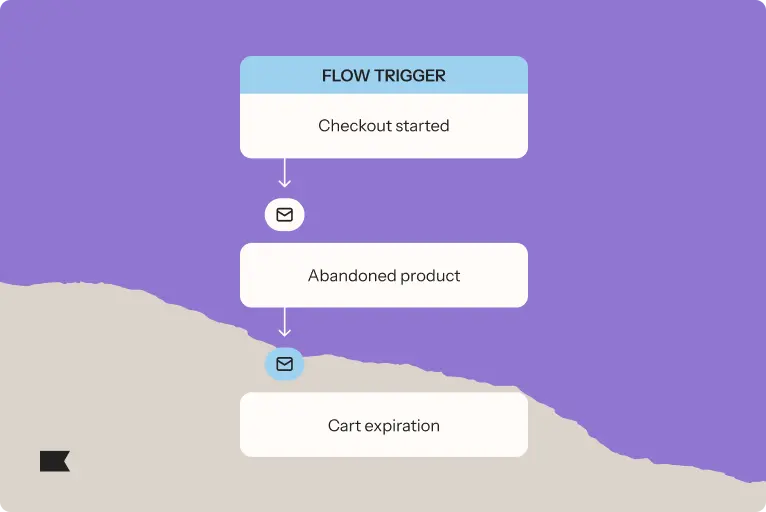The new era of B2C: 10 takeaways from K:LDN 2025
At K:LDN 2025, one thing was clear: the future of B2C marketing is here—and it’s omnichannel, AI-powered, and built on real relationships.
From behavior-changing insights to real conversations with some of the most innovative marketers in the industry, this year’s event delivered in more ways than one.
The sun even came out in London (a small miracle in itself), and between the standing-room-only sessions and bold product announcements, attendees lined up for claw machines filled with prizes from Klaviyo customers. They were cute—and a perfect reminder of the kind of brands we’re all here to build.
Here are 10 key takeaways from the mainstage keynote, expert sessions, customer panels, and live trainings that will shape how marketers grow in 2025 and beyond.
1. Omnichannel isn’t optional. It’s a smarter way to grow.
Klaviyo CEO and co-founder Andrew Bialecki opened K:LDN 2025 with a call to action: rethink how your brand connects with consumers—not just by adding more channels, but by unifying them.
Today’s customers don’t shop in a straight line. They jump between email, WhatsApp, SMS, push notifications, social, and in-store—often in the same day. And most marketing stacks just weren’t built for that kind of behavior. Until now.
Klaviyo’s new Omnichannel Campaign Builder changes the game. Marketers can now plan, launch, and measure multi-message campaigns across every key channel from a single canvas. No switching tools. No duplicating work. Just one coordinated journey, powered by real-time data and guided by AI.
Features like our new AI-powered channel affinity help you automatically send the right message on the right channel, at the right time. And with support for WhatsApp and RCS, brands can deliver rich, two-way conversations that feel less like marketing and more like a connection.
Take action: According to Klaviyo’s 2025 online shopping report, 77% of shoppers use 3–4 channels when shopping for non-essential goods, and high-income shoppers are even more likely to use more than 5. That’s not channel noise. It’s a clear signal: to grow, brands need to orchestrate—not just operate—across touchpoints.
- Stop duct-taping tools together.
- Klaviyo now gives you one platform for every message, every moment, and every customer—so you can market like your customers actually shop.
- Learn more about Klaviyo B2C CRM, and our new omnichannel tools.
2. Behavioral science is a marketing cheat code
In a standing-room-only keynote, legendary ad thinker Rory Sutherland shared why logic-based marketing often misses the mark. Humans aren’t rational, linear decision-makers—we’re messy, emotional, and unpredictable.
From “the power to notice things” to “monotheorism” (aka putting all your eggs in one marketing theory), Rory pushed marketers to embrace creativity, surprise, and psychological insight as their growth edge. Small shifts in perception can yield massive returns.
Take action: 40% of consumers say brand messages should feel personalized and connected across channels—but they rarely do. It’s time to meet consumers where they are—psychologically, not just technically. Don’t just optimize. Reframe. Change how people see the world, and their behavior will follow.
- Use A/B testing in campaigns to validate perception-shifting copy or offers.
- Layer predictive analytics into flows to act on behaviors, not assumptions.
- Tap Smart Send Time and AI-powered channel affinity to time your message to context.
3. The best brands are acting more like confidants
In “Brands Are Becoming Confidants,” Phillip Jackson of Future Commerce and Klaviyo’s Joe McCarthy explored why customers are letting brands into their inner lives. In a world where real human relationships are limited, brands that act with empathy, consistency, and shared values can become trusted companions.
Whether through DMs, memes, loyalty perks, or AI agents that feel personal, not programmatic, today’s leading brands are earning emotional loyalty, not just transactional attention.
Take action: Rethink how your brand shows up. Intimacy at scale isn’t just possible—it’s expected.
- Use AI-generated subject lines and copy variants to align with your brand voice and emotional tone.
- Build flows triggered by meaningful moments (birthdays, usage patterns, etc.).
- Use dynamic content to personalize even batch sends with first-party data.
4. B2C leaders are doubling down on marketing-service integration
Klaviyo’s 2025 State of B2C Marketing session revealed a stark gap: while 99% of marketers agree that customer experience drives brand equity, only 9% are prioritizing it.
But 53% of marketers who significantly outperformed their goals had fully aligned marketing and service teams, showing that top performers are aligning marketing and service teams, building unified views of the customer, and using tools like Customer Hub to power seamless, signed-in experiences that increase LTV and cut support tickets by up to 75%.
Take action: Map where service and marketing intersect. Then connect the dots—Klaviyo makes it simple.
- Use Customer Hub to unify marketing and support communications.
- Automate proactive updates (order status, product education) via flows.
- Give service teams visibility into customer journey and campaign history.
5. In beauty, personalization is power
In “The Business of Beauty is Personal,” leaders from Curlsmith, The Inkey List, Wild, and Tatti Lashes shared how they’re turning data into personalized experiences that feel deeply human.
Whether it’s retention flows that respond to behavior or loyalty strategies that reward authenticity, the takeaway was clear: beauty brands win when every interaction feels tailored, not templated.
Take action: Beauty shoppers are most likely to browse on social or branded mobile apps—but prefer to receive offers by email (40%), indicating a gap in personalization across the funnel. Make personalization your signature. Klaviyo’s unified profiles and segmentation tools make it easy.
- Use email as a re-engagement channel after browsing behavior.
- Build flows triggered by quiz data, routines, or past purchases.
- Test storytelling formats (e.g., creator reviews, UGC) in emails and SMS.
6. In fashion, creativity meets customer intelligence
The “Beyond the Rack” fashion panel featuring Paul Smith, Bee Inspired, and Jacquemus showed how smart brands are blending art and science. From real-time browsing signals to predictive modeling, these brands are turning shopper intent into immersive omnichannel experiences.
Take action: 38% of consumers prefer email for fashion offers, but Gen Z is 2x more likely to engage on mobile apps or social. Creative teams need insights to meet different audiences where they browse and where they buy. Combine your creative instincts with Klaviyo’s behavioral data to deliver campaigns that are as inspiring as they are effective.
- Map top channels by audience cohort using predictive analytics.
- Segment by preferred channel to personalize offer delivery.
- Add browse abandonment and back-in-stock automations to drive urgency.
7. In wellness, customers want brands that know them
The “Wellness Rituals” panel made it clear: today’s health-conscious shoppers expect brands to support their values, not just their purchases. Leaders from Loop Earplugs, Symprove, and Dose & Co are using AI to create more meaningful moments—from subscription flows to product recommendations that actually fit people’s lives.
Take action: 27% of spa and wellness shoppers prefer brand emails—but Gen Z over-indexes on SMS and app push notifications. Omnichannel strategies must balance traditional trust with modern touchpoints. Use Customer Hub to deliver post-purchase experiences that reduce friction, deepen trust, and build retention from day one.
- Create post-purchase email/SMS flows that educate and reinforce habits.
- Use Customer Hub to let customers manage subscriptions, upsells, and loyalty benefits.
- Test push notifications via branded apps or mobile wallet integrations.
8. Email and SMS work better—together
In the “Better Together” live training, Klaviyo experts walked through how brands can unify email and SMS into one coordinated strategy. The data backs it up: consumers engage across 4+ channels before buying—and brands using both email and SMS see higher conversions, retention, and ROI.
Take action: Consumers engage across 4+ channels before buying—and 76% prefer SMS during the day but shift to mobile apps at night. Channel timing matters. Build sequential campaigns. Start with an email, follow up with SMS—or vice versa—and watch engagement grow. You can also:
- Build an SMS reminder for anyone who doesn’t open your email.
- Use Smart Send Time to trigger emails when users are most likely to engage.
- Use Channel Affinity AI to sequence outreach across email → SMS → push.
9. List growth is a long game, and a smart game
In “Click, Collect, Convert,” Castore’s Tom Haynes shared how they used smart forms, paid ads, and AI testing to grow high-intent lists. From gamified pop-ups to optimized UTM targeting, the goal was clear: earn every sign-up with relevance and respect.
Take action: Consumers are more likely to subscribe if you offer value fast—especially across mobile. Gen Z, in particular, prefers SMS or app-based prompts. Use Klaviyo’s new form features and AI tools to improve submit rates and first-touch revenue, like Castore’s 102% lift. Here are more ideas:
- Use Klaviyo Forms with exit intent or time-delay logic.
- Set up A/B tests for copy, CTA, and incentive.
- Add Klaviyo List Growth Reports to benchmark by channel.
10. Customer Hub is your new growth engine
In the “Activate Customer Hub” training, attendees saw how this new feature brings the power of a signed-in experience to any brand. Think: personalized merchandising, onsite support, and loyalty features all in one place—reducing friction and increasing revenue at every touchpoint.
Take action: Start experimenting. Add promotions, product recs, and self-service tools into your Customer Hub to increase loyalty and reduce support burden.
- Turn on Customer Hub in your account (Settings → Labs → Enable Customer Hub).
- Use Hub to surface recent orders, loyalty tiers, and personalized recommendations.
- Combine with SMS or push reminders to drive repeat traffic.
Bottom line?
The B2C brands that will win in 2025 are the ones that use AI to get smarter, use data to get closer, and use every touchpoint to build relationships—not just revenue.

Related content

From early shopping and deeper discounts to the rise of loyalty and SMS growth—discover six BFCM 2025 trends shaping this year’s peak season.

Improve your cart conversion rate with 5 proven fixes for friction, payment gaps, and mobile UX that turn browsers into buyers.

Over 20 technology partners are sponsoring K:BOS 2025. Here’s a look at how their tools extend Klaviyo’s platform and give brands new ways to grow.